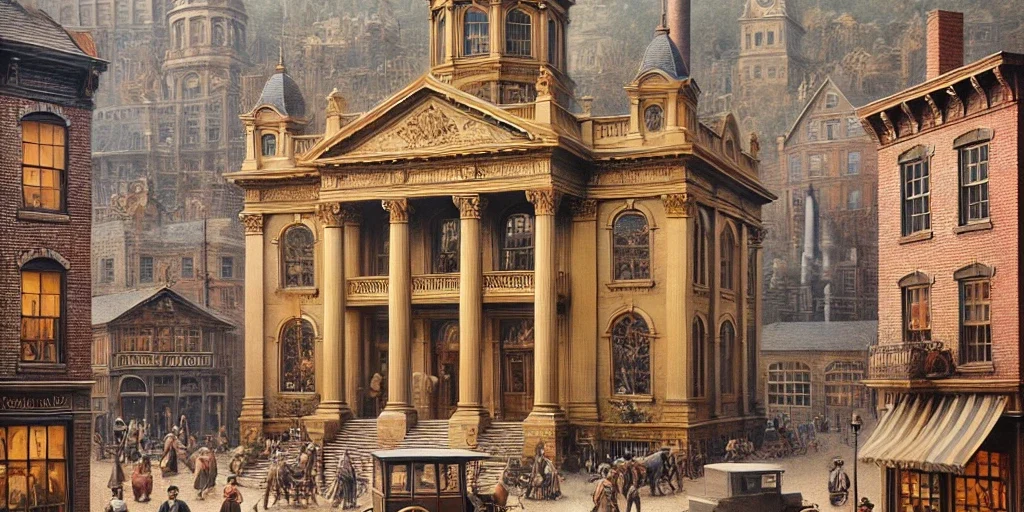The Rise and Fall of Allegheny City
Pittsburgh’s North Side wasn’t always part of Pittsburgh. Once upon a time, it was its own thriving, independent city—Allegheny City—a place with grand ambitions, a strong economy, and a deep sense of local pride. But in 1907, after decades of growth, political wrangling, and fierce opposition, Allegheny City ceased to exist, swallowed into Pittsburgh through a controversial annexation.
This is the story of Allegheny City: its rise as a prosperous community, its golden age of industry and culture, and its dramatic absorption into the growing metropolis across the river.
The Birth of Allegheny City
The land that would become Allegheny City was first charted in 1788 as part of Pennsylvania’s ambitious plans to organize new settlements. Strategically positioned along the Ohio River, just across from the growing town of Pittsburgh, it quickly became an attractive location for settlers and businesses looking for opportunity outside the crowded confines of Pittsburgh proper. By 1828, Allegheny was officially incorporated as a borough, and in 1840, it gained full city status.
In its early years, Allegheny City thrived as a residential and commercial center. The city was designed with a structured grid, wide streets, and beautiful public spaces—most notably Allegheny Commons, Pittsburgh’s oldest park. While Pittsburgh was rapidly industrializing, Allegheny City developed into an intellectual and cultural hub, home to some of the region’s most influential residents, including Andrew Carnegie, who spent much of his youth in the city.
The Golden Age of Allegheny City
By the mid-19th century, Allegheny City had established itself as an economic powerhouse in its own right. Industry flourished along its riverfront, with factories, mills, and warehouses supporting Pittsburgh’s growing steel and manufacturing empire. The city became home to a growing middle and upper class, with elegant homes lining the streets of neighborhoods like Manchester and Allegheny West.
Education and culture thrived as well. In 1890, Andrew Carnegie funded the creation of Carnegie Free Library of Allegheny, the first of many public libraries he would later build. The Buhl Planetarium, another local landmark, helped cement Allegheny City’s reputation as a forward-thinking, progressive community.
At its peak, Allegheny City was the third-largest city in Pennsylvania, boasting a population of over 100,000 people. It had its own government, infrastructure, and a fiercely independent identity. But despite its prosperity, trouble was brewing.
The Controversial Annexation
Pittsburgh had long been eyeing its neighbor across the river. As the steel capital expanded, it sought more land, labor, and resources. City leaders argued that merging with Allegheny City would create a stronger, more unified urban center. The people of Allegheny City, however, were not convinced. They valued their independence and feared being overshadowed by Pittsburgh’s political and industrial influence.
A bitter legal and political battle ensued. In 1906, the Pennsylvania General Assembly passed legislation allowing Pittsburgh to annex Allegheny City. Despite massive opposition from Allegheny City residents—who voted overwhelmingly against the merger—the annexation was pushed through in 1907. Allegheny City was no more. Overnight, it became Pittsburgh’s North Side.
The decision was deeply unpopular among former Allegheny City residents, many of whom felt betrayed by the state government and Pittsburgh’s aggressive expansion efforts. The annexation remains one of the most contentious events in Pittsburgh’s history.
The Legacy of Allegheny City
Though its name was erased from the maps, Allegheny City’s legacy endures. Many of its historic buildings and neighborhoods remain, giving Pittsburgh’s North Side a unique character that still feels distinct from the rest of the city. Landmarks like Allegheny Commons, The Mexican War Streets, and The National Aviary continue to reflect the city’s vibrant past.
Today, the North Side is a thriving mix of historic charm and modern development. Once the home of the city’s wealthiest elites, it is now a hub for arts, culture, and sports, hosting attractions like the Andy Warhol Museum, Carnegie Science Center, and PNC Park.
While Allegheny City may no longer exist as an independent municipality, its influence remains woven into the fabric of Pittsburgh. It was a city built on ambition, innovation, and resilience—qualities that continue to define its neighborhoods to this day.








